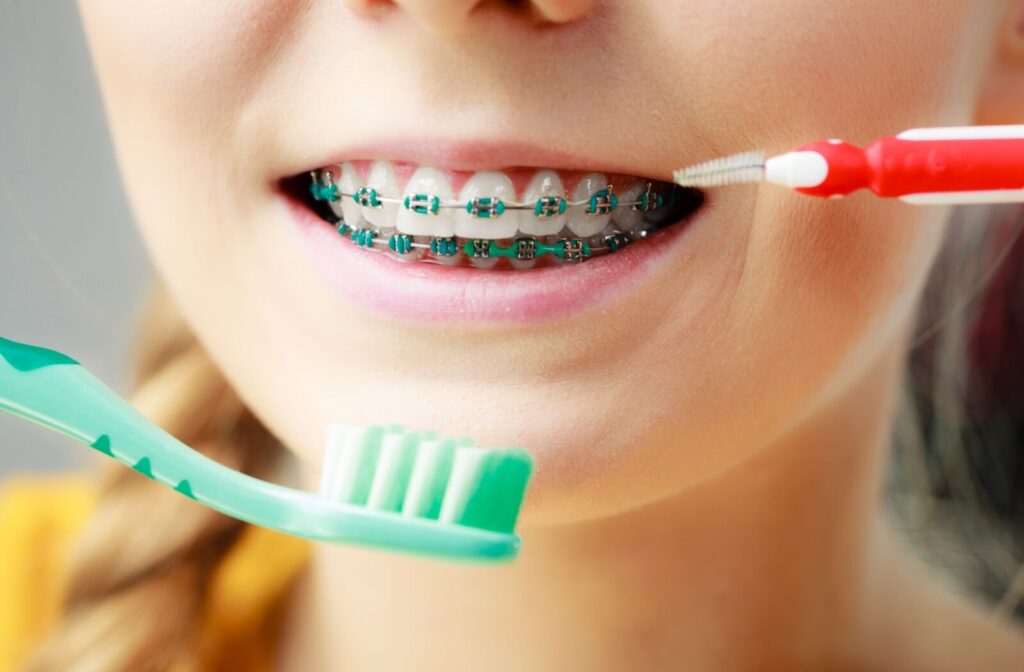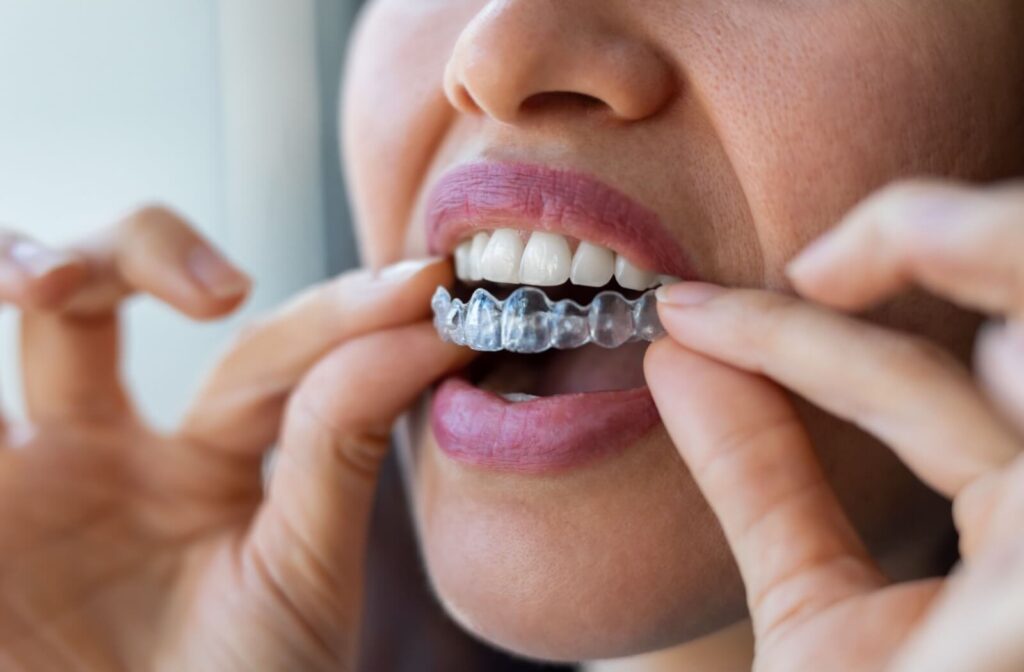Invisalign vs Braces: Which Is Right for Your Smile?

Deciding to improve your smile is exciting but comes with important choices. Orthodontic treatment is an investment in your confidence and oral health, and selecting the correct method for you is essential.
Invisalign and traditional braces are 2 standard options for orthodontic correction. While Invisalign can offer a more discreet way of straightening your teeth, traditional braces may be more effective for more complex cases of misalignment. Ultimately, you should consult with your dentist to determine the best type of orthodontic correction for you.
What Is Invisalign & How Does It Work?
Invisalign is a modern teeth-straightening system. Instead of brackets and wires, Invisalign uses custom-made, clear plastic aligners designed to fit snugly over your teeth. These aligners apply gentle, consistent pressure to gradually move your teeth to their desired positions.
You’ll change to a new set of aligners approximately every week (or according to your orthodontist’s instruction), each taking you closer to your perfect smile. The aligners are removable, making Invisalign a discreet and flexible option for orthodontic treatment.
Advantages of Invisalign
Invisalign has become popular for many of its perks, including:
- Discreet appearance: The clear aligners are virtually invisible, which makes them ideal for adults and teens who want orthodontic treatment without the noticeable look of braces.
- Removability: You can remove Invisalign aligners for eating, brushing, and flossing—unlike traditional braces which are immovable except by a dentist or orthodontist.
- Comfort: Clear aligners can be more comfortable than braces, with no wires or brackets to irritate your mouth.
- Fewer orthodontist visits: Invisalign treatment can require fewer follow-up visits to your orthodontist.
Who Is an Ideal Candidate for Invisalign?
While Invisalign offers many benefits, it’s best suited for cases involving mild to moderate dental misalignment, such as:
- Spacing issues
- Openbites
- Underbites
- Crowded teeth
People with severe misalignment, deep bites or more complex orthodontic issues may require traditional braces for effective correction. Your orthodontist can help determine if Invisalign is right for you.

What Are Traditional Braces & How Do They Work?
Traditional braces are devices used in orthodontics to gradually push teeth into alignment. There are several types of traditional braces, the most common being metal or ceramic. In both cases, your dentist or orthodontist bonds a bracket on each tooth, and then places a thin, flexible archwire over the brackets—ceramic braces are clear or tooth coloured instead of metal.
Your dentist or orthodontist may make adjustments periodically to ensure proper progression and alignment.
Advantages of Traditional Braces
There are some clear benefits of opting for braces as an orthodontic treatment option, like:
- Highly effective for complex cases: Braces are often more precise in correcting severe misalignments, complicated bite issues, and other structural problems.
- Durability: Brackets are fixed in place, so there’s no risk of losing or forgetting to wear them, and regular checkups ensure your dentist can replace worn brackets.
- Variety of options: Modern braces come in a variety of materials to suit different cases.
Disadvantages of Traditional Braces
While braces are effective, they also come with some drawbacks:
- Visibility: Traditional braces are more noticeable, which can be a concern for some people who want a discreet option.
- Dietary restrictions: Hard and sticky foods can damage braces and are typically off-limits during treatment—braces also take an active hygiene routine to keep them clean.
- Discomfort: The brackets and wires can sometimes initially irritate the inside of your mouth, and adjustments may cause temporary soreness after the braces are first placed.
Who Is the Best Candidate for Braces?
Braces are usually recommended to those who need comprehensive orthodontic treatment. Braces may be the most effective solution if your dental issues include severe crowding, significant bite problems, overbites or other complex challenges.
The Decision-Making Process
Deciding between Invisalign and braces isn’t just about the features—it’s about what works best for your lifestyle and orthodontic requirements. Your dentist can provide the most accurate and applicable advice, but here are some factors to consider:
- Complexity of your case: If you have a severe bite issue or need significant correction, braces are likely the better option.
- Aesthetic preferences: If you don’t need massive corrections and you’re concerned about aesthetics, then Invisalign offers an almost-invisible alternative.
- Commitment to wearing aligners: Invisalign requires consistent wear to maintain effectiveness, so if you think you might forget to wear them, braces may be a better choice.
- Budget: Costs for both options can vary, so it’s worth exploring financial plans or insurance coverage to determine what’s feasible for you.
Your Smile, Your Choice
Choosing between Invisalign and braces is a significant decision with multiple things to consider, but it doesn’t have to be overwhelming. By understanding the differences and consulting an experienced orthodontist, you can make a choice that aligns with your goals and lifestyle.
Remember, the end goal is the same—a confident, healthy smile you’ll love.
Schedule a consultation with Dr. Caley Höediono at Orthodontic Smile Studio today. She can examine your mouth, review your needs and lifestyle, and then offer tailored advice on an orthodontic solution that provides the results you’re looking for.
DGS powered by SmileShop


